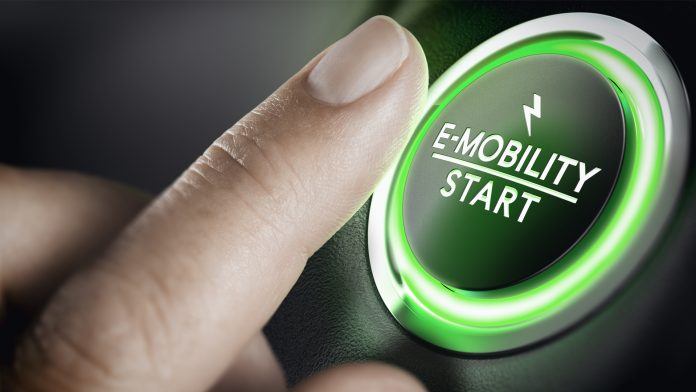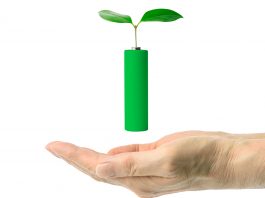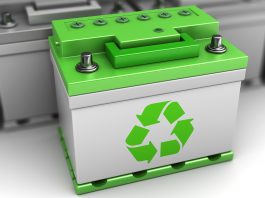Modernising Europe’s legislation for battery technologies is a key step in building a circular supply chain but questions remain about how sustainable practices can be implemented in the global market.
When we discuss the green energy transition, electric vehicles (EVs) are pinpointed as the principal technology in driving sustainability forward. Despite the huge variety of battery technologies on the market, lithium remains the key component in the manufacturing of electric vehicles, but it is also in short supply. Questions therefore remain about how Europe can develop a sustainable supply chain to support the manufacturing of EVs, while remaining a key competitor in the global market.
Germany’s Electrical and Electronic Manufacturers’ Association (ZVEI) provides key insights into the current technical, economic, legal and socio-political issues affecting the electrical sector, facilitating key exchanges between its members. Lorna Malkin, Junior Editor of The Innovation Platform speaks to the Managing Director of the ZVEI Batteries Division and Head of Environmental Policy, Christian Eckert, about the latest EU batteries regulation and the challenges in upscaling green energy applications.
Can you tell me about the state of Germany’s battery market? In which areas have you seen an increase or decline in growth over the past year?
Despite the COVID-19 pandemic, the battery market grew pretty steadily last year in Germany. The demand for batteries for EV vehicles is increasing significantly but that is still a limited segment. The automotive sector overall experienced issues during the pandemic, in some cases production lines had to close temporarily and this had a knock-on effect to the suppliers.

When we discuss e-mobility, we tend to focus heavily on lithium-ion but there is a broad variety of battery technologies including nickel-metal, lead acid and solid-state batteries. The battery market is very broad, and we expect to see growth in all areas.
What are the main objectives of the ZVEI Batteries Division? How do these support the latest EU Batteries Regulation?
The latest batteries legislation comprises a very broad document and there are many issues to discuss but we think it is going in the right direction. In the past, we were led by the Battery Directive which was more focused on waste, collection and recycling but not in a joined-up way as we have seen with the new legislation which focuses on the importance of the circular economy. Batteries will play a key role in Europe’s green energy transition and so we think it was necessary to modernise the legislative framework, especially since the Battery Directive is 16 years old. Back then, e-mobility and lithium were not really discussed whereas now these are hugely important in the development of battery technologies. We are expecting a double-digit growth in the EV market each year and therefore, there will be many more batteries on the market, and we need to consider the infrastructure in terms of manufacturing and production, as well as how we are going to sustainably source raw materials. Repurposing and recycling these materials is an important part of the circular economy for batteries moving forward.
We have a finalised position paper that addresses a variety of points relating to the new regulation. For instance, we believe greater clarification is needed on how carbon footprint should be calculated in Europe and the international markets; we need to ensure that the battery market promotes a level playing field for everyone. There are also questions relating to the sourcing of raw materials, manufacturing, and minimum recycling requirements and how companies are expected to prove their compliance with the correlating regulations.
It is also important to consider how easy these processes are to follow if you are a smaller company. Larger companies tend to have the necessary processes already in place when it comes to handling more bureaucratic procedures and following industry rules and regulations. When we are trying to regulate a vast and complex market, with thousands of applications, we really have to think about how these new regulations should be formulated so that European manufacturers are not at a disadvantage if they have followed the rules but those companies outside of Europe have not.
Lithium-ion batteries are a key technology in the development of the electric mobility industry, what challenges need to be overcome in order to grow the EV market?
Lithium-ion is the key technology in driving the electric mobility industry forward. However, the question now is how can we roll lithium production out on a huge scale while ensuring this is sustainable. Battery manufacturing requires a number of materials that are not currently available in Europe. We know that batteries are an important factor in implementing the circular economy action plan, they play a major role in e-mobility and green energy storage etc., however the circular economy can only be successful if the supply chain for batteries is sustainable. At present, it is still a challenge to sustainably source the raw materials for batteries and manufacture those batteries without incurring a negative carbon footprint. This is why the batteries regulation is important when we discuss the sourcing of raw materials for the EV market because that market will have the biggest share of those materials and the car OEMs will have the market power to regulate those systems and could play a major role in establishing sustainable supply chains.
Energy for battery manufacturing is another important factor when we discuss the EV market. Of course, using greener resources should be increased where possible but we know there is currently a lack of green energy available to satisfy demand. Over the next ten years, Europe will have to show that it is possible to use greener energy sources in major parts of production to meet its carbon-neutral goals. Again, we need to remember that we are part of a global market and sustainable battery production is a global issue. At present, the majority of battery production takes place in Asia and so we need to ensure, globally, companies are adhering to the same rules and regulations for batteries.
Following on from this, what other battery types are being used in the manufacturing of electric vehicles and how is the demand for these expected to grow?
I really feel innovation is on our doorstep in terms of new battery technologies; solid-state batteries for instance, are the hottest aspirant. There is some really promising research and test production of alternative technologies, but our estimation is that lithium-ion will be the technology of choice in the coming years. Of course, it is a question of competition so maybe tomorrow, someone will market alternative technologies.
In order to mass produce any new technology you need to have a lot of experience and do a lot of tests. It may also be that you start with a niche market or use the technology in a limited number of applications and build up experience and market share from there. Lithium-ion batteries are so successful because manufacturers have spent a lot of time and money researching and testing them, and this research is ongoing; there is still potential for these batteries to store significantly more energy in the same volume.
What contribution are battery technologies currently making towards decarbonisation?
There is a now a huge variety of battery technologies available and markets are continuing to expand with new applications. Beside e-mobility, energy storage in the home is another way that we can contribute to decarbonisation. Houses with a photovoltaic system on the roof for instance are a positive way of storing green energy. However, at the moment cost is a big hurdle in rolling out these green energy alternatives on a domestic level. The infrastructure is not available to support this green energy transition, people are not going to buy an EV if there are no charging outlets available or they have to pay additional tax for storing green energy.

Although the technology is there to support these green energy applications there are many administrative issues that need addressing. How can providers of the energy grid work together with the local municipalities? How would the tax system work? Implementing these technologies and moving towards a more electric society has to make sense from an economic standpoint, with the right ecosystem in place. You need the will of the consumer, manufacturer, and the policymakers, it really is an issue for the whole of society.
Christian Eckert
Managing Director of the ZVEI Batteries Division ZVEI
www.zvei.org/en
Please note, this article will also appear in the sixth edition of our quarterly publication.









